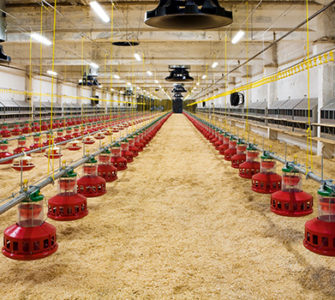Shedding light on LED lamps and dimmers: They’re not all a match
Getting the correct lighting is important in poultry houses to help maximize the birds’ genetic potential; however, too often there’s a disconnect between the LED lamps and the dimmers in service. “We know a lot more than we did 5 or 10 years ago,” Tom Tabler, poultry specialist, University of Tennessee Extension, told Poultry Health Today. “Not every LED bulb and dimmer work well together; we didn’t realize that in the beginning.”
Tabler has studied the ins and outs of poultry-house lighting and noted that most producers are unaware of the challenges created when the LED lamp and dimmer are not the right match. “Even the folks that sell the bulbs are not always aware of this problem. So, it will be an educational process to bring everyone up to speed,” he added.
First, consider the bulb
While it’s tempting to stock up on inexpensive bulbs at a big-box store, not all LED lamps can meet the demands of the poultry-house environment, Tabler explained. Inexpensive LEDs that typically go in a residence or office are not set up for the dust, ammonia, humidity and moisture that exist in a chicken house.
So, start by selecting agriculturally graded LED bulbs from a reputable supplier.
Select the right dimmer
Selecting the right dimmer is key to functionality, Tabler said. There are leading-edge dimmers, trailing-edge dimmers and some that have combinations of both.
“LED lamps are designed for trailing-edge dimmers,” he emphasized.
The basic job of a dimmer is to cut out part of the alternating current flowing in a sine wave (moving up and down). When dimming, “we’re not letting that light have the whole current,” Tabler said. “A leading-edge dimmer cuts the front part of the wave; a trailing-edge dimmer cuts the back part. LEDs don’t like to lose the front part of the sine wave; it causes voltage spikes.”
Over time, that causes flickering and lumen depreciation, which occurs gradually and will significantly reduce the life of the bulb. Consequently, how the LED lamp and dimmer sync together is critical in preventing lamp and lighting issues.
“In most cases, LED-lamp technology is ahead of dimmer technology,” Tabler noted. “To get around that, some companies have started making dimmers to match their lamps.”
Confirm with a light meter
While incandescent bulbs dim linearly and smoothly, LED lamps do not.
“With an LED, if you take it down from 100% to 90% to 80%, it may not look like it’s changed at all,” Tabler said. “Then you go to 70% and all of a sudden it gets a whole lot darker.”
A light meter is the best option to confirm dimmer settings as well as measure lumen depreciation, which can go unnoticed and lead to insufficient lighting levels for long periods. At a cost of $100 to $150, every grower needs to have a good-quality light meter, according to Tabler, and know how to use it.
“A light meter will tell you exactly the light level in terms of foot-candle levels,” he added. “You cannot judge that with your eyes. Without a light meter you’re just guessing at what’s going on inside that house.”
The bottom-line impact
Bottom line, the ability to meet light levels and light quality within a poultry house will impact whether the grower can meet production expectations. Companies often set foot-candle standards for various production stages, and if the dimmers can’t meet the criteria, then growth suffers.
For example, Tabler pointed to companies that grow large birds (8.5 to 9.5 pounds): “They want very low light levels ⸺ say, 0.02-, 0.03-, 0.04-foot candles. When you get down that low, depending on your dimmer and lamp combination, that may not be possible to achieve because your dimmer doesn’t have the technology to handle what you’re asking it to do,” he noted.
If, through the course of lumen depreciation and over time, the birds don’t get what they need, “you’re not going to lose a house of chickens. They’re not going to quit eating and drinking because the light level’s not right,” he said. “But they’re not going to perform to their potential.”
Posted on December 15, 2022

















